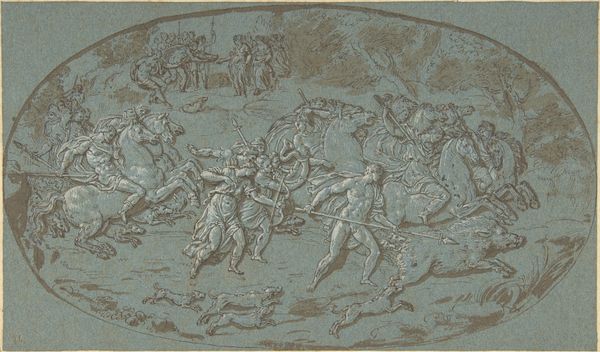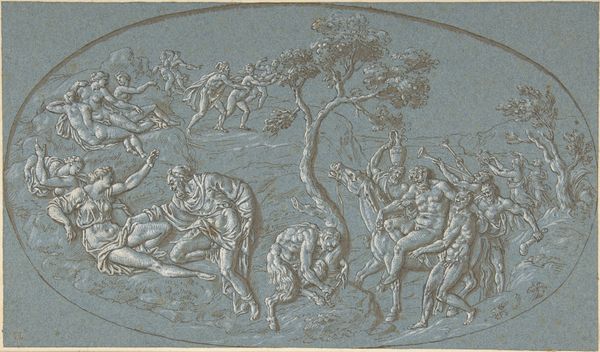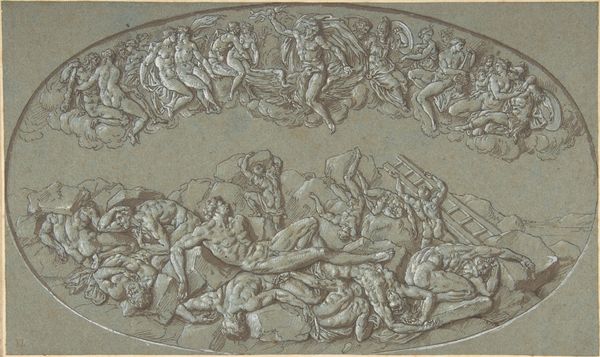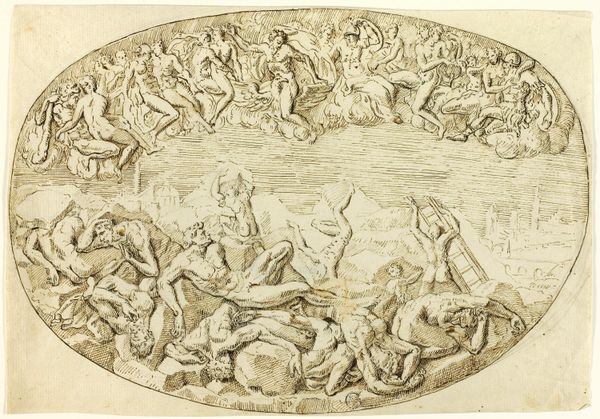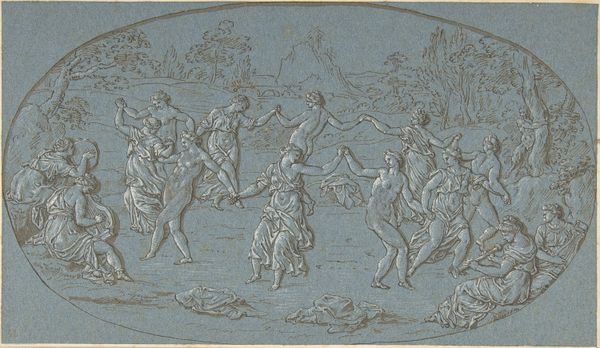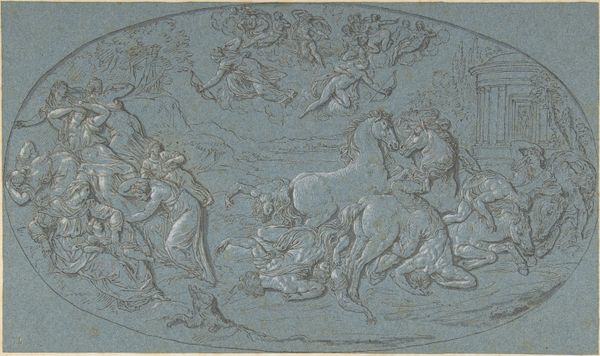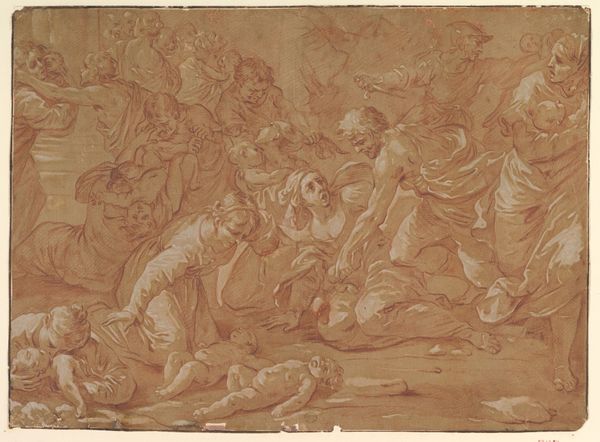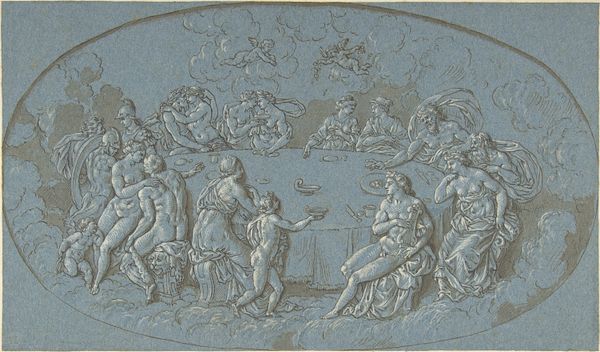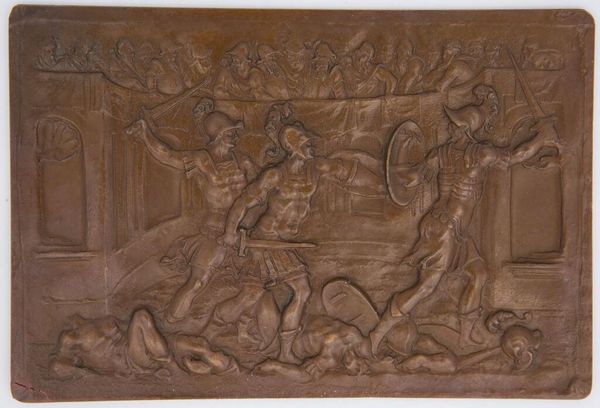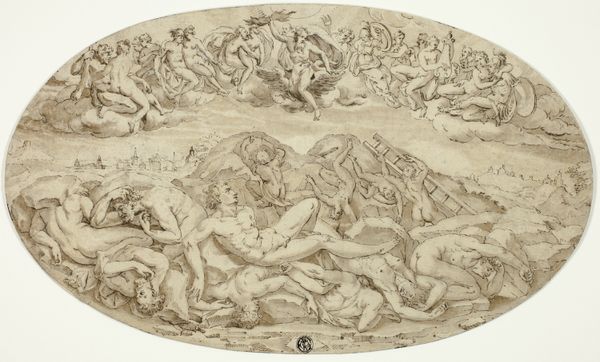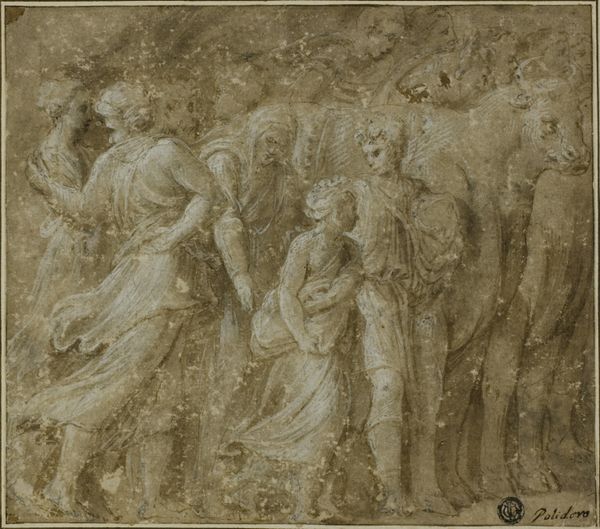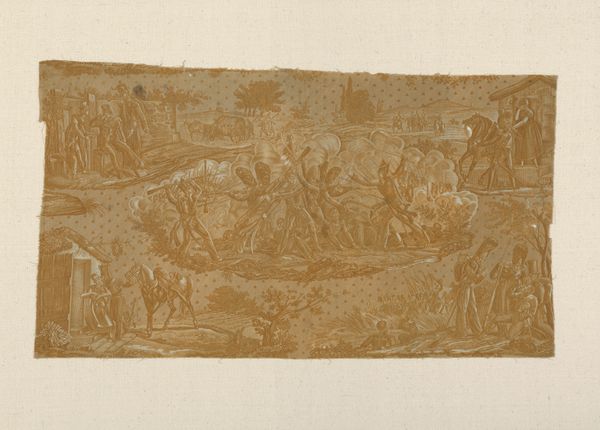
King Midas Feasting At The Arrival of Silenus 1693 - 1733
0:00
0:00
drawing, print, engraving
#
drawing
#
allegory
#
baroque
# print
#
landscape
#
horse
#
men
#
history-painting
#
nude
#
engraving
Dimensions: sheet: 6 5/16 x 10 13/16 in. (16 x 27.5 cm)
Copyright: Public Domain
Editor: Here we have Bernard Picart's "King Midas Feasting At The Arrival of Silenus," made between 1693 and 1733. It's an engraving. There's a real sense of abundance and maybe even a bit of chaotic revelry depicted. What stands out to you about this print? Curator: It's interesting how Picart uses the relatively reproducible medium of engraving to depict this scene. Think about the social context. Engravings like this circulated widely. So, in essence, he's mass-producing an image of opulent consumption. Does the tension between the unique artwork versus this mass produced image inform our reading? Editor: I never considered that aspect of it! Does the material used to produce the work contrast with the values represented within it? How? Curator: Exactly! Engraving, traditionally a means of disseminating information or creating multiple copies for a broader audience, is used to depict the ultra-elite, the pinnacle of wealth. There's a certain critique implied there, isn't there? Also consider how the labor of the artist, painstakingly creating the image, contrasts with the effortless luxury on display. Does the sheer labor required to make an engraving impact your interpretation? Editor: Definitely! The painstaking effort underscores the ease of Midas' feast, highlighting the inequalities. Almost as if it's revealing a hidden cost for all this wealth and luxury. Curator: Precisely. The materials and the method used to produce art – the labour, the intention to mass distribute copies, all shape the meaning as powerfully as the imagery itself. It reframes it as a form of social commentary. Editor: That gives me so much to think about, viewing it in terms of production. I'll definitely keep that in mind. Curator: Remember, art isn't just about what’s depicted. It’s about how it’s made, how it's circulated, and what those processes reveal about the world.
Comments
No comments
Be the first to comment and join the conversation on the ultimate creative platform.
